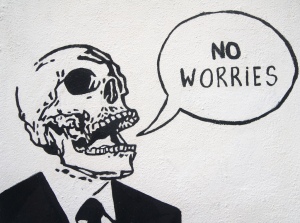I’ve been reading William Clark’s Academic Charisma and the Origins of the Research University. It’s an interesting if rather unwieldy book about how all the rituals of the university that we tend to take for granted – note-taking in lectures, seminar discussions, reading lists, graduation ceremonies, funny hats and gowns – have developed since the Middle Ages. There are some fascinating details: the Oxbridge tradition of disputatio developed, according to Clark, as a non-violent version of the medieval joust. In case you don’t want to read all of its 662 pages, the index, which I’m guessing Clark compiled himself, gives a pretty good idea of what a strange place academia is and has always been. Here are some edited highlights:
Academic persona:
babble as protean
cream puffs, handshakes, and the scholarly racket
lording over bookshelves
managed through envy
the miseries of scholars
pale versus paunchy
publication as virility
Dissertations:
a “work of the night”
Examination:
candidates swear to legitimate birth
power of handshakes at
Fame:
minted by mutual citation
Gossip:
as academic babble
as indistinguishable from reviews
Göttingen, University of:
obsesses about reputation from writings
professors “all too busy the whole day”
Lecturers:
living medievally
Lectures:
to fill the time and end on time
Libraries:
as composed of ‘monstrous’ materials
Newton, Isaac:
lectures at Cambridge to empty halls
Peer review:
as indistinguishable from gossip and rumor
Professors:
chair does not embody expertise
fined for cancelling lectures
“personae most noble and precious”
salary and a big or inflated name
Not tied to merit (directly)
should have and acquire books and instruments
as slackers at Cambridge
worked to death young
Publication:
making noise and inflating names
Students:
as note-takers
swear oaths about attendance in the Middle Ages
Writing:
for applause



